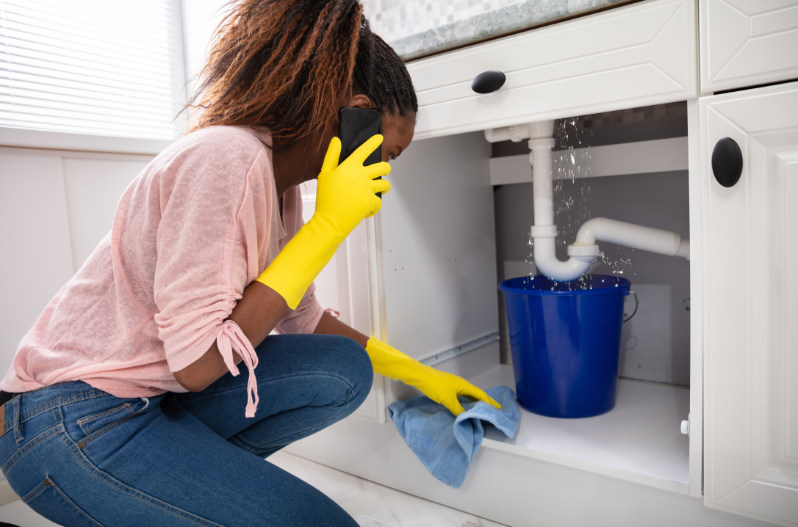Water leaks are extremely destructive and can ruin walls, carpeting, cabinets, and even furniture. While there are several ways to stop a water leak, you still need to make repairs and clean up the damage. Here are the best ways to stop a leak until a plumber or restoration company can arrive.
How Do You Stop Water Leaks Until Help Arrives?
Here are the most effective ways to stop a water leak. While they can prevent water damage, they will not prevent leaks forever. You still need to call a plumber to repair the leak as soon as possible.
Shut Off the Water
The best way to stop a leak is to shut off the water. While most leaks will continue until the pipes drain, this is a fast and effective way to limit water damage.
However, it also means you cannot use the water in your home, so it’s temporary at best. Call a plumber and schedule repairs as soon as possible.
Use Pipe Tape
Although temporary, pipe tape is an effective way to stop water leaks. There are several kinds of pipe tape, but the most common are silicon or fiberglass. Both form a water-tight barrier that will stop a leak, but they are only temporary solutions.
When using pipe tape, start by shutting off the water. Then dry the area thoroughly and wrap the tape around the pipe tightly. Always read and follow the instructions for your pipe tape and wait the recommended time before turning your water back on.
However, pipe tape is only a short-term solution to stopping a water leak. Check the tape every six to eight hours for leaks. If you use pipe tape, you still need to call a plumber for permanent repairs.
Seal the Leak With Epoxy
Epoxy is a type of strong, waterproof glue. Most epoxies contain two liquids that form a strong bond when mixed. However, epoxy putty and tape are also available.
Application instructions vary widely, so follow the steps listed for your specific product. Like pipe tape, epoxy will only stop a water leak for so long. Have the pipe repaired as soon as possible to prevent more damage.
Put a Bucket Under the Leak
In some cases, you can put a bucket under the leak. While this will not stop leaks, it will collect the water and limit the damage. Unfortunately, this is only effective if water is dripping from above.
Depending on the leak, you may need to empty the bucket frequently. Shutting off the water will also slow down the leak until help arrives.
Wrap the Pipe With a Towel
As a last resort, wrap the pipe with a towel and call for help immediately. Depending on the size of the leak, a towel will give you about 15 minutes.
While you can change towels, this is unrealistic at stopping a water leak. Not only does changing a towel take a lot of time, but it offers very little protection.
It’s really only effective at limiting damage while waiting for a professional to arrive. Many plumbers and all water damage restoration companies offer emergency services to repair the damage fast.
What To Do After Stopping Water Leaks
No matter which method you use, these are only temporary solutions. You still need to repair the leak and clean up any water.
Call a Plumber
As long as there is no major water damage, you should call a plumber. They can inspect the water leak and repair the issue. Repair options include permanent pipe patches, pipe or joint sealing, and pipe replacement. Your plumber will walk you through what caused your leak and the best repair options for your problem.
Call a Restoration Contractor
If you have more than a few inches of water, call a water damage contractor like Restoration Local to remove the water and quickly dry your home. If necessary, they can repair or replace damaged flooring, walls, or cabinets.
Depending on the cause of the leak, they will also repair the pipe. However, you may still need a plumber in some cases. Your water damage restoration specialist will explain more once they assess the situation.
If you have water damage after a leak, get expert cleanup now. Our local water restoration specials offer 24-hour emergency service and always free estimates on cleanup and repair. Call 888-443-3110 for immediate water cleanup and dry-out.





